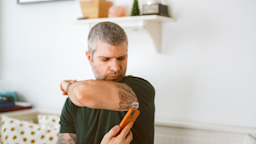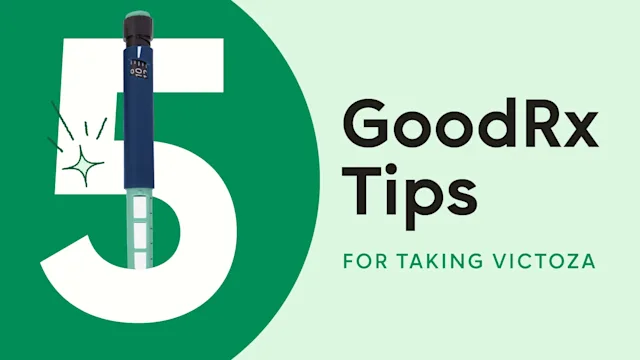Key takeaways:
A hemoglobin A1C test measures the average amount of glucose (sugar) in your blood over the past 2 to 3 months.
An A1C test is useful for monitoring how well treatment is working in people with diabetes.
An A1C is also a good way to check for diabetes in people who don’t have a diagnosis of diabetes. Consider getting a baseline A1C if you’re 35 or older, you have a high risk for diabetes, or you have symptoms of diabetes.
In the U.S., 1 in 10 people have diabetes. And 1 in 5 people with diabetes don’t know they have it. These are significant numbers, and they may make you wonder if you might have diabetes. Fortunately, there’s a quick and easy blood test to get screened — hemoglobin A1C (HbA1c or A1C).
An A1C blood test estimates the level of glucose (sugar) in your blood over the past 2 to 3 months. It’s different from a blood glucose test or a finger-stick test, which can only tell you your blood glucose level at the moment of testing.
A1C testing has a few different uses. For people with diabetes, regular A1C testing monitors how well a diabetes treatment plan is working. But A1C is also useful for diagnosing diabetes and prediabetes.
Should you get an A1C test? The answer is “yes” if you’re at risk of diabetes or you have symptoms of diabetes. That’s because diabetes is a treatable condition. And the earlier you can get a diagnosis, the better.
What is A1C?
An A1C estimates your blood glucose (sugar) level over the past 2 to 3 months. It’s a simple blood test you won’t need to fast for.
If your results are high, it means your blood sugar level has been higher than normal (more on this below).
How does an A1C test work?
Hemoglobin A1C measures glycosylated hemoglobin, or HbA1c. That’s the part of the hemoglobin molecule that attaches to glucose. To understand why that matters, let’s back up a little.
When you eat food (specifically, carbohydrates), these get broken down into glucose in your gut. Glucose is the body’s main source of fuel. Glucose gets absorbed from the gut into the bloodstream to power cells and organs around the body.
In the bloodstream, glucose attaches to hemoglobin (the part of red blood cells that contains oxygen and iron). Glycosylated hemoglobin is the combination of glucose and hemoglobin, and that’s what the A1C blood test measures.
Which test is best to diagnose diabetes? From A1C and fasting glucose to oral glucose tolerance tests, here’s what you need to know about the different ways to diagnose diabetes or prediabetes — and when each one makes sense.
What’s a “normal” A1C — and is it the right goal for you? The answer isn’t always one-size-fits-all. Learn what medical professionals consider a normal A1C and why your target may depend on your age, health, and other factors.
Science-backed ways to lower your A1C (without burning out): Small changes can lead to big results. From smart food swaps to movement strategies that fit your life, these tips make it easier to bring down your A1C and keep it there.
The higher your blood glucose levels are, the higher your hemoglobin A1C level will be. And because a red blood cell lives for 3 to 4 months, an A1C level gives an average blood glucose level over a similar period of time. This long-term view of your blood sugar level is a big advantage of A1C testing.
What is a normal A1C?

A1C levels fall into three ranges:
Normal: A1C below 5.7%
Prediabetes: A1C between 5.7% and 6.4%
Diabetes: A1C of 6.5% or higher
Read more like this
Explore these related articles, suggested for readers like you.
If you have diabetes, the American Diabetes Association (ADA) recommends that you target an A1C of less than 7%. If you’re 65 or older, or you have complex medical needs or memory issues, then a higher A1C goal (8% to 8.5%) is usually safer.
Ultimately though, these are just recommendations. Your diabetes care team will consider your unique medical history when recommending what your personal targets should be. While there are suggested A1C levels, they may vary based on a person’s specific situation.
Check out this ADA A1C conversion calculator. When you enter your A1C result, it shows your average blood glucose. For example, if your A1C is 6.2%, your average blood glucose is 131 mg/dL.
Who should get an A1C blood test?
Anyone with prediabetes or diabetes should get regular A1C testing. And anyone at risk of prediabetes or diabetes should get tested, too.
This testing is important because estimates show that 1 in 10 people have diabetes, and as many as 1 in 3 have prediabetes. Most people with prediabetes don’t know they have it, and 1 in 5 people with diabetes also don’t know they have it. That’s a whole lot of people who should get an A1C test.
Here’s the thing: You can still have prediabetes even if you don’t have symptoms. And it can be hard to recognize the signs of diabetes. That’s why the ADA recommends A1C screening if you:
Are over the age of 35
Have a parent or sibling with diabetes
Fall into the category of overweight
Are physically active fewer than 3 times a week
Have certain racial/ethnic backgrounds
Have symptoms of diabetes, like increased thirst, frequent urination, and blurry vision
If you’re wondering whether you’re at risk for diabetes, this 60-second ADA risk test is a good place to start.
How often should you get an A1C test?
Your primary care provider will let you know how often you should have A1C testing. This can vary from person to person. Here are the general guidelines if you have:
Normal results (with risk factors): You’ll retest every 3 years.
Prediabetes: You’ll get A1C testing every 1 to 2 years.
Diabetes: You’ll get A1C testing at least twice a year.
How do you prepare for an A1C test?
There isn’t anything special to do before getting an A1C test. Unlike other labs, such as a fasting glucose or oral glucose tolerance tests, you do not need to fast (stop eating or drinking) before this blood test.
How long does it take to get results from an A1C test?
If you go to a lab for a blood draw, your A1C results will usually be available within a few days.
Some healthcare professionals have an A1C machine in their office. This is known as point-of-care testing. These machines can give you an A1C result during your appointment. It’s convenient, but it’s not accurate enough for diagnosis. Point-of-care testing should only be used for monitoring people with diabetes who already have a treatment plan.
Can you test A1C levels at home?
Yes, you can test your A1C level at home. Research suggests that A1C home tests provide accurate results. There are a number of mail-in options. And there are also A1C self-check monitors that are similar to a glucometer (glucose meter).
But in some cases, home testing may not be right for you. Consider the following before you spend money on an at-home A1C test:
Cost: There’s a range of costs, so be sure to compare your options.
Insurance coverage: Insurance doesn’t cover most home test kits, but you can use your flexible spending account (FSA) or health savings account (HSA) funds to pay for some options.
Ease of use: Most require an online account to activate the test and receive results. But some allow you to simply call a number for results.
Results: It can take between 1 day and 3 weeks to get mailed results from an A1C test kit.
Support: Some options offer customer product support, if needed.
How accurate are A1C tests?
Nowadays, A1C tests are quite accurate. In the past, results varied a lot and depended on the machine that checked your blood sample. But, in recent years, a strict quality control program — The National Glycohemoglobin Standardization Program — standardized more than 99% of the A1C tests in the U.S. That’s huge, and it means that your A1C should be pretty similar wherever you get it tested.
The A1C isn’t a perfect test, but it has a few important advantages over other diabetes tests. First, it’s pretty consistent. It’s also convenient. It doesn’t require fasting, special timing, or any kind of other preparation. That’s why experts consider it the “gold-standard test” for diagnosing and monitoring diabetes.
As mentioned above, the exception to this is point-of-care testing. While these tests are fairly accurate, they should be used only for monitoring A1C in people with diabetes rather than for diagnosing new diabetes.
What can affect your A1C results?
Like any test, it’s possible to get a false result. You can have a high A1C and not have diabetes. This is because anything that affects your red blood cells can also affect A1C test results.
You might get a falsely high A1C even though you don’t have diabetes. This can be due to:
Some medications, like corticosteroids
Anemia, such as if you have low iron, low vitamin B12, or low vitamin B9 (folate)
High triglycerides (a type of fat in the blood)
Spleen surgery
It’s also possible to have undiagnosed diabetes with a normal A1C. Here are some reasons you may have a falsely low A1C:
You’re getting treatment for anemia, for example, iron or vitamin B12 supplements or erythropoietin.
You recently donated blood.
You’re pregnant.
You have hemolysis, a condition where red blood cells are being destroyed too fast.
You have regular hemodialysis for kidney failure.
If there’s any reason to suspect your A1C level isn’t accurate, you’ll probably need to get repeat testing. You’ll likely need to get a fasting blood glucose or an oral glucose tolerance test, too.
What other tests can diagnose diabetes?
Sometimes people need other tests to diagnose or confirm diabetes.
If your care team suspects that your A1C isn’t right, they may order more testing, such as:
Fasting blood glucose
Repeat A1C
Oral glucose tolerance testing
Fructosamine testing
Frequently asked questions
Yes, A1C testing is used during pregnancy for Type 1 and Type 2 diabetes. It’s also used if someone is at high risk for diabetes before or early in pregnancy. Early testing allows for timely treatment to bring A1C levels into the normal range and helps protect your baby. Otherwise, most women will have an OGTT (oral glucose tolerance test) between weeks 24 and 28 of pregnancy to check for pregnancy-related (gestational) diabetes.
Lowering your A1C is gradual, and results can vary from person to person. Since A1C reflects your average glucose levels over the past 2 to 3 months, making significant changes can take that long, too.
If you wear a continuous glucose monitor (CGM), you can see real-time glucose results, trends, and patterns. A CGM can show how changes you’ve made are improving your glucose levels right now.
By making sustainable lifestyle changes, including a balanced and nutritious diet and following your treatment plan, you can lower your A1C. Focus on whole foods that are rich in protein, fat, and fiber, and are low in simple carbohydrates. But you don’t have to give up the foods you love. It’s all about moderation.
Yes, A1C testing is used during pregnancy for Type 1 and Type 2 diabetes. It’s also used if someone is at high risk for diabetes before or early in pregnancy. Early testing allows for timely treatment to bring A1C levels into the normal range and helps protect your baby. Otherwise, most women will have an OGTT (oral glucose tolerance test) between weeks 24 and 28 of pregnancy to check for pregnancy-related (gestational) diabetes.
Lowering your A1C is gradual, and results can vary from person to person. Since A1C reflects your average glucose levels over the past 2 to 3 months, making significant changes can take that long, too.
If you wear a continuous glucose monitor (CGM), you can see real-time glucose results, trends, and patterns. A CGM can show how changes you’ve made are improving your glucose levels right now.
By making sustainable lifestyle changes, including a balanced and nutritious diet and following your treatment plan, you can lower your A1C. Focus on whole foods that are rich in protein, fat, and fiber, and are low in simple carbohydrates. But you don’t have to give up the foods you love. It’s all about moderation.
The bottom line
Hemoglobin A1C testing tracks your average blood glucose over the past 2 to 3 months. Experts recommend baseline A1C testing for people who are 35 or older, have a high risk for diabetes, or have symptoms of diabetes.
There are steps you can take to lower your A1C level. It’s a gradual process that can take 2 to 3 months to see improvements. It’s never too early to talk with a healthcare professional about your risk of diabetes and the need for A1C testing.

Why trust our experts?


References
American Diabetes Association. (n.d.). EAG/A1C conversion calculator.
American Diabetes Association. (n.d.). Take the type 2 risk test.
American Diabetes Association. (n.d.). Understanding type 2 diabetes.
American Diabetes Association. (2023). Statistics about diabetes.
American Diabetes Association Consumer Guide. (n.d.). Meters.
American Diabetes Association Professional Practice Committee. (2022). Classification and diagnosis of diabetes: Standards of medical care in diabetes—2022. Diabetes Care.
American Diabetes Association Professional Practice Committee. (2025). Management of Diabetes in Pregnancy: Standards of Care in Diabetes—2025. Diabetes Care.
Association of Diabetes Care & Education Specialists. (n.d.). Healthy eating.
Centers for Disease Control and Prevention. (n.d.). Prediabetes – your chance to prevent type 2 diabetes.
Centers for Disease Control and Prevention. (2023). A report card: Diabetes in the United States infographic.
Centers for Disease Control and Prevention. (2024). A1C test for diabetes and prediabetes.
InformedHealth.org. (2023). In brief: What do glucose tolerance tests involve? Institute for Quality and Efficiency in Health Care.
Kuo, I., et al. (2018). Anemia modifies the prognostic value of glycated hemoglobin in patients with diabetic chronic kidney disease. PLoS One.
Little, R. R., et al. (2019). The National Glycohemoglobin Standardization Program: Over 20 years of improving hemoglobin a 1C measurement. Clinical Chemistry.
Radin, M. S., et al. (2013). Pitfalls in hemoglobin A1c measurement: When results may be misleading. Journal of General Internal Medicine.















